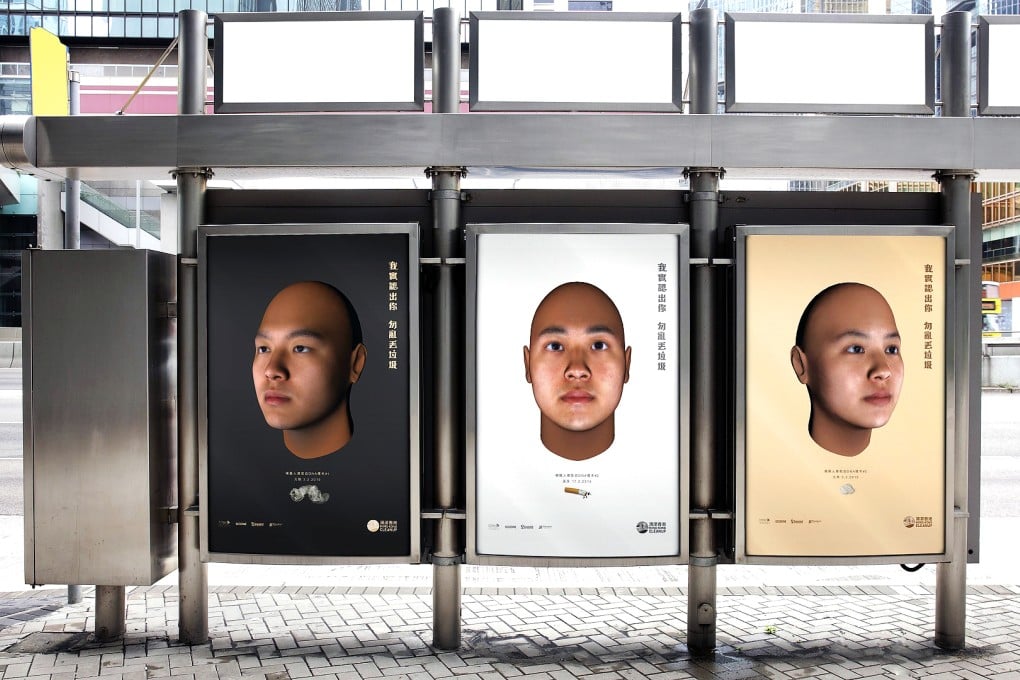Hong Kong litterbugs shamed in billboard portraits made using DNA from trash
Success of media campaign to combat Hong Kong's littering epidemic is hailed, reaching over four million people on social media

A campaign that used DNA analysis to give a face to anonymous Hong Kong litterbugs, then posted representations of the faces on billboards across the city, has been a big hit on social media.
The Face of Litter campaign was launched on Global Earth Day last month for the Hong Kong Cleanup Initiative, organised by online magazine Ecozine and the Nature Conservancy. It was aimed at raising awareness of the extent of littering in the city by pinpointing those responsible and encouraging people to change their behaviour.


Last year, NGO Hong Kong Cleanup rallied 418 teams for a six-week challenge that saw 3,894 tonnes of litter from streets, coastlines and country trails, according to co-founder and CEO Lisa Christensen.
Marketing communications agency Ogilvy & Mather Hong Kong came up with the idea for the billboard campaign and enlisted US-based Parabon Nanolabs. Ogilvy sent the company samples of litter found on local streets, including chewing gum, cigarette butts and a condom. Parabon used its DNA phenotyping system, SnapShot, to read tens of thousands of genetic variants from each sample. From that data, the company says, it can accurately predict ethnicity, eye, hair and skin colour, freckling and face shape.